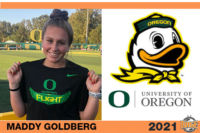RAGE COMPETITIVE PLACEMENT PHILOSOPHY
Competitive player placements can be the cause of some stress for parents and players alike. This includes questions like “what team will I make” and “will I have fun if I’m not on a team with my current friends.”
The RAGE Competitive program is designed to enable all players to be the best they can be. Our philosophy is that the optimal developmental situation is one where the players on a given team are playing at a similar level. This means that we need enough players in each age group to make teams of similarly able players.
The Importance of Success
People – and especially kids – tend to enjoy things at which they feel successful. When it comes to school, they tend to gravitate towards subjects in which they excel, and the same is true for sports. Kids like the sports in which they experience success, even down to the positions they prefer to play when on the field.
Tangible successes tend to be the most valuable – things like scoring goals, making moves, and controlling the ball. This is applicable especially in a sport like soccer, where there is one ball (toy) and getting and keeping it is difficult.
Achieving success is a key component of the enjoyment of any activity. From a player development perspective, there are two related points:
- Players try harder (and thus improve faster) when they’re having fun
- Up to 70% of participants nationwide quit organized sports before age 13, and the number one reason given is a lack of fun.
http://changingthegameproject.com/why-kids-quit-sports/
The Importance of Challenge
For optimal development, players must feel successful but also be challenged at the same time. In an ideal situation, there are enough players each age group that the “ability band” within a team (that is, the difference between the stronger players and the weaker players) can be minimized. When player numbers are limited, the “ability band” on a given team naturally increases. As a result, some of the players in the lower ability range of the team may see extreme challenges, but not have the sufficient success enjoy the game. Likewise, some players who are more skilled and/or athletic don’t get challenged consistently enough to optimize their own improvement.
Following is an example:
The player indicated by the blue arrow on the red line falls near the middle of the ability spectrum for players in the age group.


This player is near the bottom of the ability band of her team. Because there’s such a wide range between the bottom and top players on both teams, the coach may struggle to fit the needs of all of the players, making sure they are successful and appropriately challenged. And because this player has limited ability relative to her team, she will experience limited success in practice and games. Only the players in the middle of the team’s ability band (the “hot spot” shown below) are experiencing optimal levels of BOTH success and challenge.

Note that given this estimation of the “hot spot,” only about half of the players are in the “focus” area for development. For the player in the example, this is a difficult situation. Not being successful may mean she doesn’t have enough time on the ball, doesn’t get to score goals, or do the types of things that young players enjoy about soccer. She may struggle with the competition level, which tends to fall around the “focus” of the team. It’s not fun to struggle. This is, in fact, a player that is at risk of being discouraged by a difficult season.
Compare that to a situation where there are more teams in the age group:

With more teams the “ability bands” are notably more narrow. The example player still has the same ability level, but is now in the upper half of her team. From a coaching perspective, it is much easier to provide the appropriate instruction for these teams.
As shown below, the focus areas are now a better fit for the players of any given team. In this scenario, the players are closer in ability within each team and it’s easier to find an appropriate league for these teams. Players are less likely to be discouraged in their struggle to have success on the field and the optimal success / challenge balance is more achievable.

Bottom Line
The tension around Competitive player placements comes from a positive place: everyone wants what is best for the players. The natural desire to be placed on the highest possible team should be tempered by the goal of having the best possible soccer experience for the entire year.
To that end, following are a few important perspectives during placements:
● The #1 Goal is to ensure accurate and appropriate placement of players based on their overall engagement and ability.
● More players at placements means the possibility of creating more teams, thereby optimizing player development by keeping the ability bands narrow.
● Player placement is an inherently imperfect science. Beyond the placement sessions, RAGE coaches also utilize the Fall season to continue to evaluate players to ensure they are at the most appropriate level in order to optimize their development.
The RAGE Competitive player placement philosophy is based on the premise that playing with teammates of similar ability levels results in the best opportunity for player development. RAGE will continue to build an exceptional club on this premise while encouraging a love of the game and enabling every player to be the best they can be.
As always, feel free to contact RAGE with any questions or feedback.


